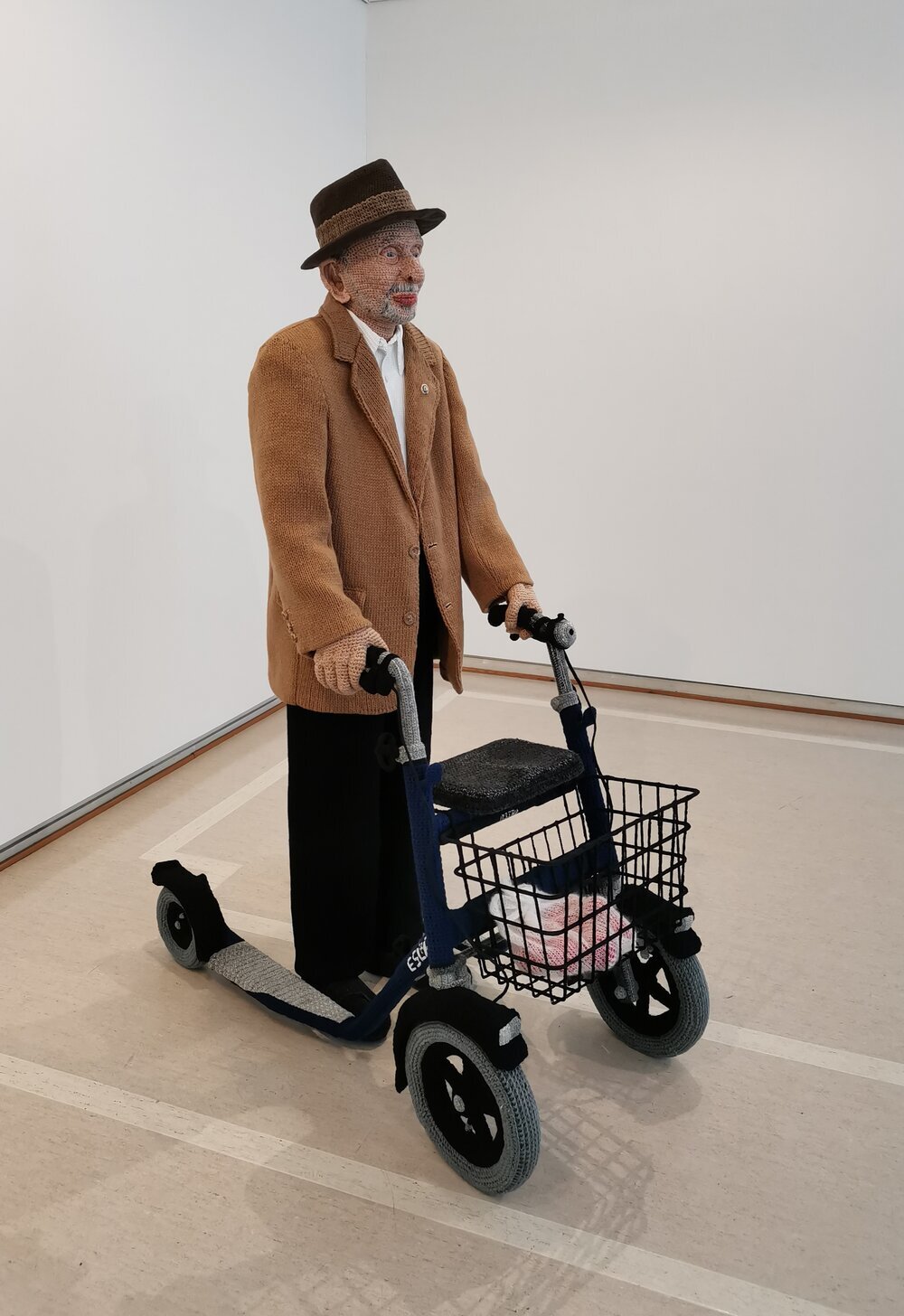Talking Practice: Liisa Hietanen
Liisa Hietanen was born in Lohja, Finland in 1981. She graduated as Bachelor of Design from Lahti University of Applied Sciences in 2007 and as Bachelor of Fine Arts from Tampere University of Applied Sciences in 2012. She currently lives and works in Hämeenkyrö, Finland.
Tell us about your sculptures:
“I make sculptures by means of crocheting and knitting. When I made my first crocheted artwork, I didn't have any earlier background in yarn-based handcrafts.
I am currently working on a commissioned public sculpture. By the end of 2020 I will start working on new Villager sculptures. I started making Villagers in 2012 and in the series, I depict my fellow villagers from Hämeenkyrö in crocheted and knitted sculptures. I meet my models in natural everyday situations. The process of choosing a model is intuitive. The person depicted might be someone I meet in the library, in the locker room of the gym or walking their dog on the way home. I don't know most of my models beforehand but as the process goes on, I get to know them.
The slow handcraft techniques work as a counterforce to the accelerating pace in different areas of life. To me, important values in my works are encountering someone very concretely, seeing the other for real and getting to know them slowly. I see these as relevant values and balancing actions especially in contrast to quick stirs and thin encounters in social media.
After settling in Hämeenkyrö I wanted my work in the village to be meaningful both for myself and the others living there. When each Villager sculpture is finished, I bring them to public sites in Hämeenkyrö for the locals to see. The works have been on display for example in the local library, Restaurant Kehäkukka, Sitomo Flow'er flowershop and Veikon Kone household appliance shop. Working in a community is an essential part of my work and I want to have a dialogue with the people directly in my surroundings.”
How long does it take you to create each sculpture from start to finish? And what is the process once you find your villager?
“It takes me in average four to five months to make a villager sculpture. The time depends really much on the subject and details.
I photograph my models from all angles. I don't really make sketches for my sculptures except for the frame. I weld the frame out of rebar and use concrete for weight when necessary. After making the frame I form the shape on it out of soft materials like foam, wadding and fabric. On top I sew the crocheted parts.
I meet the models in person several times during the process. Making a three-dimensional work based on photographs is not easy. It is important to see the people for the sculpting process and I also get to know the people when we meet.”
Who are your favourite artists or sculptors?
“I've never been a fan of picking favourites. The kind of art I am impressed by or get into varies a lot. Seeing art in person is important. I'm touched by experiences.”
Thank you so much Liisa for speaking with us. If you would like to see more of Liisa’s sculptures, click here to visit her website.
The Villagers series has been supported by Alfred Kordelin Foundation, Finnish Art Society, Finnish Cultural Foundations Pirkanmaa Regional Fund and Arts Promotion Centre Finland.
Image credits: from top, left: AULIS, 2020, Crochet, knit and embroidery, ©Liisa Hietanen, photo by Liisa Hietanen. Top right: JUHA-MATTI JA JENNY, 2019, Crochet, knit and embroidery, ©Liisa Hietanen, photo by Marjaana Malkamäki.
Middle, left: WEIJO (detail), 2016, Crochet, knit and embroidery, ©Liisa Hietanen, photo by Marjaana Malkamäki. Right: ANNA AND EDITH, 2016, Crochet, knit, embroidery and woollen shirt, ©Liisa Hietanen, photo by Marjaana Malkamäki.
Bottom, left: RAIJA, 2018, Crochet, knit and embroidery, ©Liisa Hietanen, photo by Marjaana Malkamäki. The woolen shirt is based on the original design Pihapuu sininen by Sirkka Könönen. Right: VELI (detail), 2014, Crochet, knit and embroidery, ©Liisa Hietanen, photo by Marjaana Malkamäki.





